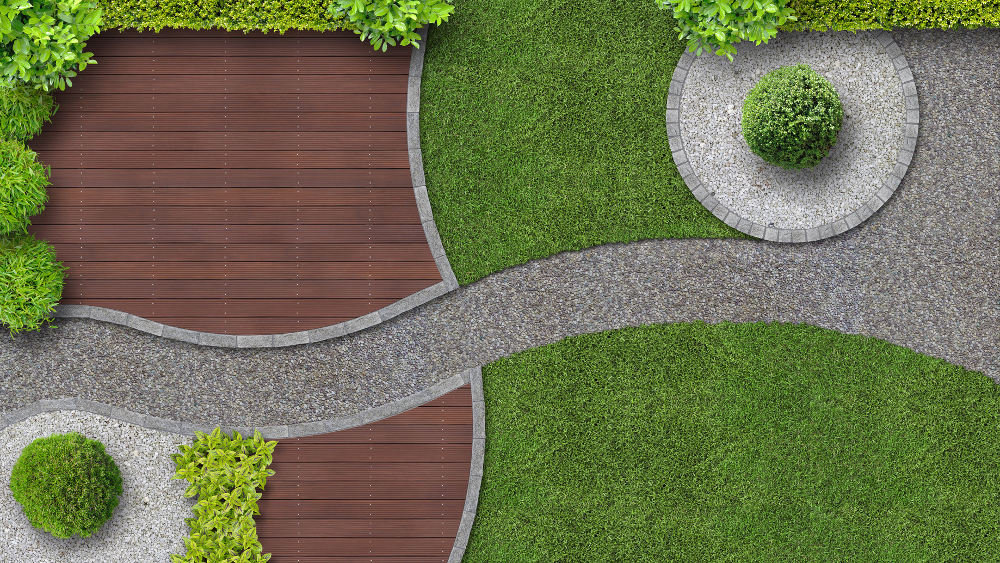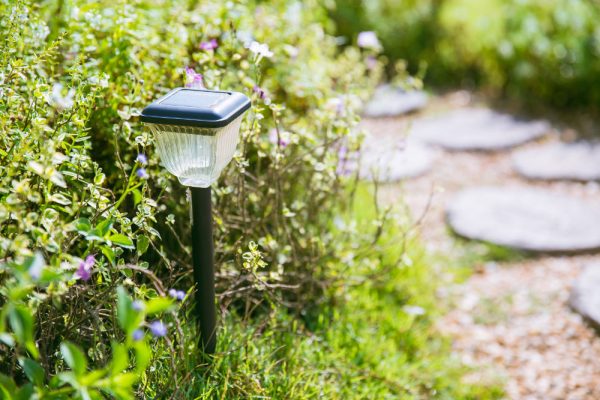When planning new garden features, there is often one important component that tends to get overlooked – the garden path. By leaving a walkway out of your landscaping plans, your garden can feel fragmented and be difficult to use.
Aside from serving the practical function of helping you journey through your garden, a well designed path brings cohesion between one space and another. It saves plants and lawns from being trampled, whilst using different shapes and materials can help create a range of atmospheres within different sections of your garden.
As well as the creative side of designing your path, a number of practical considerations will also influence your decisions. Your budget, the potential traffic and foot flow, as well as safety (particularly if being used by young children or the elderly) should all be borne in mind.
To help you get started, we’ve put together 10 tips for creating the perfect garden path:
1. Plan for traffic levels
Change the width of your walkway depending on the amount of traffic it will be receiving. High traffic areas are likely to require a wider path to allow for people to pass easily without ending up in the flowerbeds.
2. Think about users needs
Also think about the needs of those using your garden when deciding on the width. Families with young children may require wider paths to allow for pushchairs and buggies, or children’s toys to run easily up and down the path. Likewise, elderly users may require a wider path particularly if they need mobility aids to assist them with moving around the garden.
3. Light the way
Use outdoor lighting such as lanterns, lamps, posts, recessed lights and solar lights for safety and to highlight routes through the garden. For more information on this please read our outdoor lighting blog.
4. Material choice
Choose a material that’s best suited for your needs (and budget). With a wide range of paving materials available it’s worth doing a bit of homework prior to selection to make sure it’s going to stand up to the demands of your garden throughout the year.
5. Add interest
Why go for a straightforward walkway? Add twists and turns or mix your materials to create you own designs and add a touch of flair to your garden.
6. Create zones
Create a plan of destination zones, to naturally shepherd people to areas of your garden you want to highlight such as a garden structure or sculpture, a particular plant of interest, a play area or a pond.
7. Use visual tricks
A nice visual trick is to make the width of your pathway shorter to indicate that you have arrived at a destination (such as a tree, flowerbed or summerhouse).
8. Add interest
Pathways by themselves can look very plain so add visual interest with bedding, borders and small trees around the edges.
9. Create an edge
Plant box hedging along the side of a path to emphasise its shape and keep a clean line between your grass and flower beds.
10. Protect areas
Paths are particularly good for creating a manicured look for your garden by keeping gravel, or slate chips in one place and mulch and plants off walkways.
If you are thinking of landscaping your garden remember to give consideration to its walkways to tie it all together. It may seem trivial, but a well designed path has many benefits that could be the final thing a garden needs. For more information, please contact Thames Valley Landscapes on 01628 629720 or send us an enquiry.





